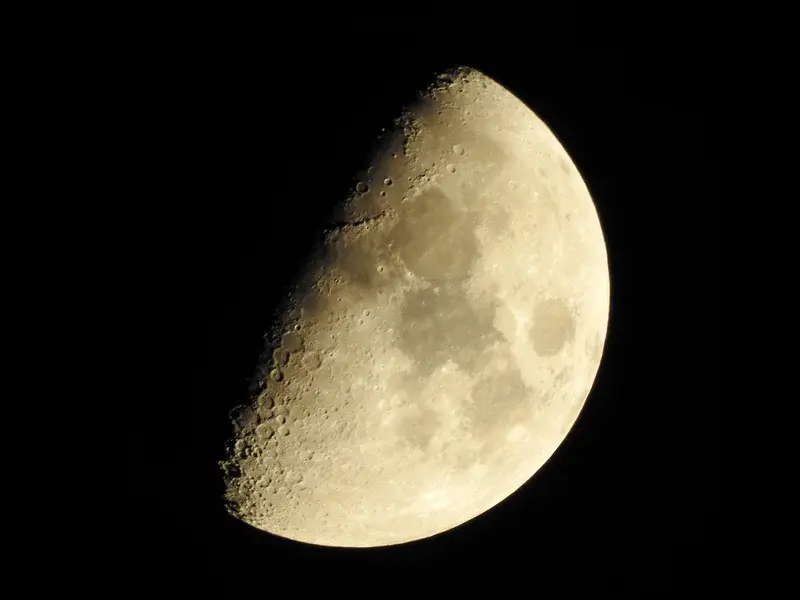
Increasing Moon – seen from Hamburg
by Wolfgang Fraedrich, Hamburg, Germany
The image shows the increasing moon on March 16, 2016, seven days before the full moon. 53.3% of the lunar front are already illuminated. The moon does not glow on its own, but its surface reflects the sunlight. The sun always illuminates a complete half of the moon, which, in its orbit around the earth, always turns its face (which we see at full moon) toward the earth. The reason for the moon phases is the perspective of the observer. If you are on the side of the moon that is not illuminated by the sun, it is called the new moon. At the full moon you can see the half of the moon facing the sun completely illuminated, at the crescent moon, half moon or three quarter moon you can look sideways to the moon and can see the transition of its day and night side. As the moon is in constant motion with respect to the earth and the sun, the angle of view of the moon changes from day to day - and thus the phase of the moon. The particular angle at which the illuminated, visible lunar surface appears depends on latitude. Near the equator, for example, the boundary between the light and shadow sides of the crescent is approximately horizontal. In the northern hemisphere, an increasing moon is illuminated on the right, a decreasing moon on the left. In the southern hemisphere, the phases of the moon appear reversed: the illuminated surface of the moon increases from left to right.
Category
Location
- Europe (3883)
- Western Europe (787)
- Germany (264)
- Exact location (9.9498 E, 53.6320 N)
Tags
Colours
Image properties
4608 × 3456 px;
image/jpeg; 4.0 MB
Camera:
Nikon COOLPIX P900
Taken on 16
March
2016
Submitted on 31 December 2017
Licence
Creative Commons Attribution-NonCommercial-NoDerivs 3.0 Unported (CC BY-NC-ND 3.0)
Credit
Wolfgang Fraedrich (distributed via imaggeo.egu.eu)
Share
Appreciate
Report